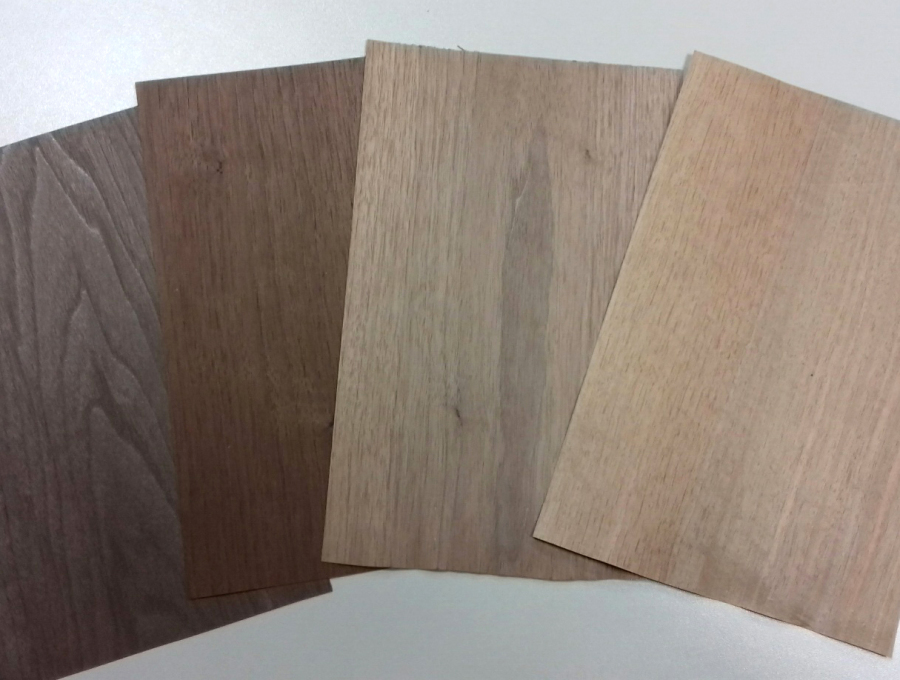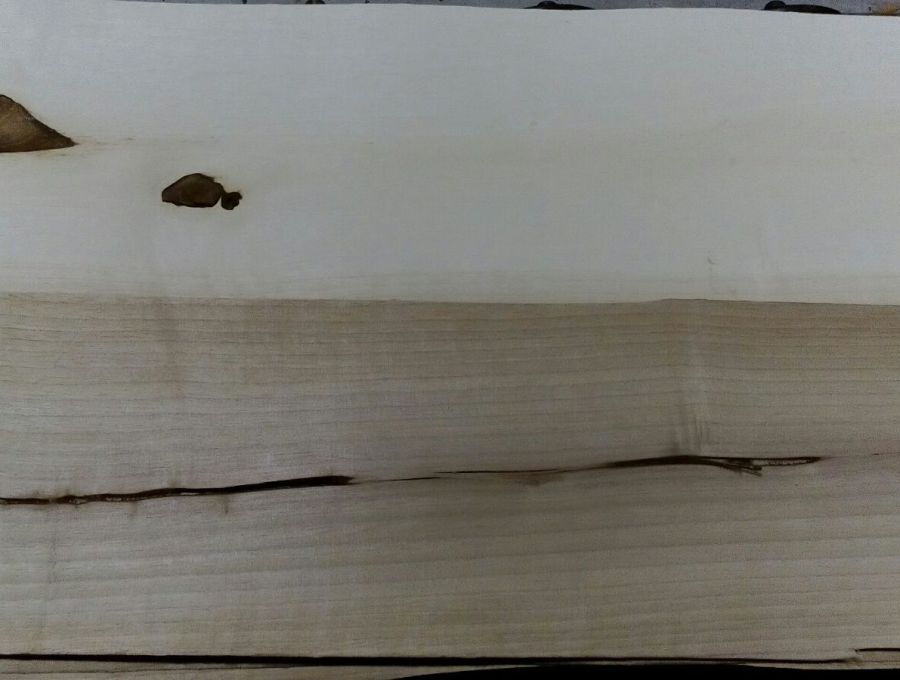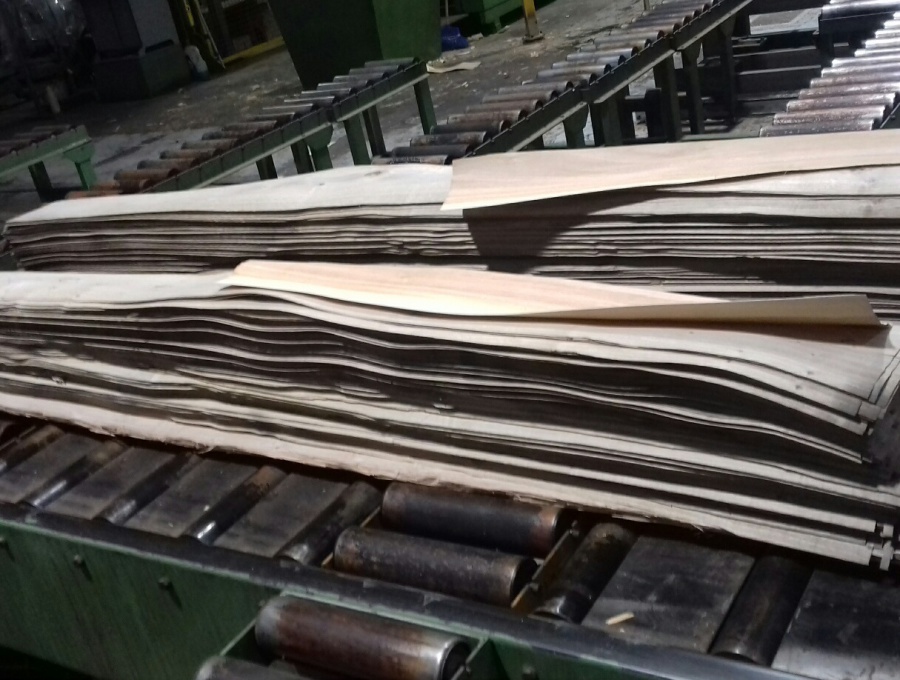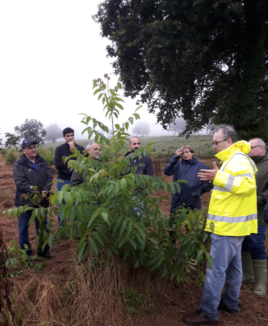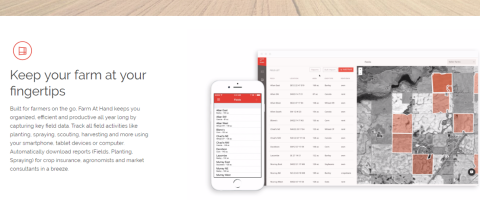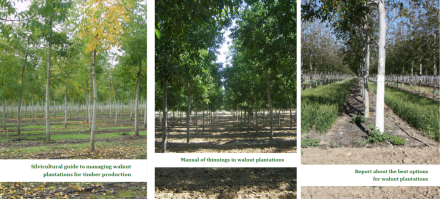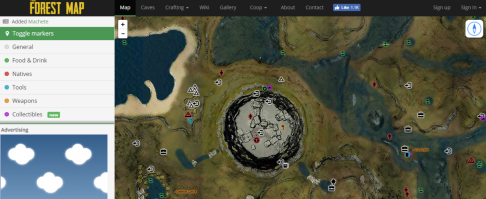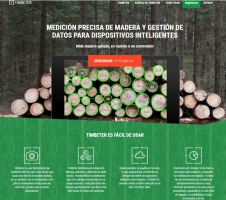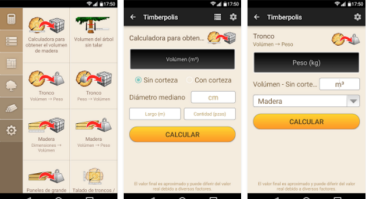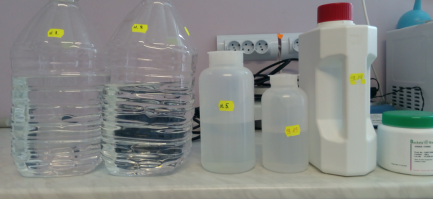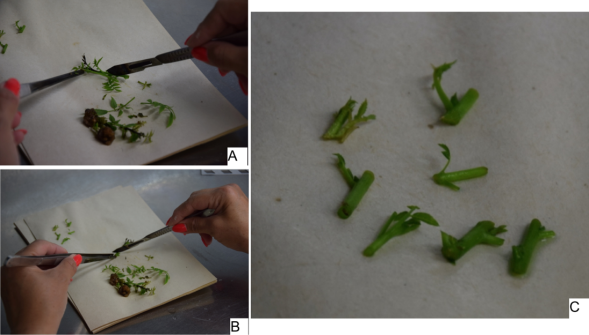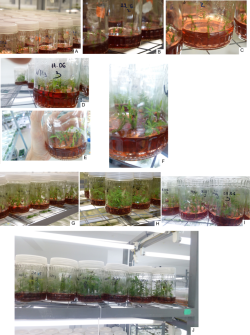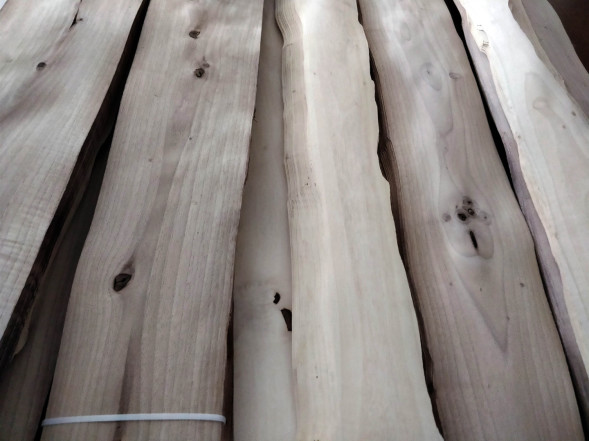Product development in WP4
During the first Period of the WOODNAT Project, the partners have collaborated in the research of technological characteristics of European walnut veneer. They have also carried out a large market study to ensure the market uptake of the new products. As a result of this, two main paths have been identified: dyeing and vaporizing. Both technologies transform the colour of the raw material to produce final products for the market.
The dyeing process takes advantage of the specific colour tone of the raw material. LOSAN has much experience with this technology. The company also has a huge knowledge of what the market likes. The WOODNAT activity will focus on dyeing clear walnut to achieve a darker tone. By means of this, Juglans Regia will look like if it were Nigra, so market acceptation will be higher. The advantage of this technology is that the final colour can be controlled with high accuracy. There are two disadvantages. On the one hand, it is an expensive process. In addition to this, it only changes the colour not the contrast.
An alternative path to market uptake of European walnut veneer is vaporizing. This technology has been largely used for Beech. The effect of vaporizing on European walnut ought to be controlled. Nevertheless, it is a process that produces darker veneer. In addition to this change of tone, the wood surface also gains contrast so it looks livelier. Once again the process for wood modification is focused on transforming the look of the Regia into a Nigra style.
LOSAN ROMANIA is currently working together with SEISTAG. The work is carried out on both processes. The objective is to develop a final product that has a successful
market uptake in spite of technical limitations and market preferences. The first results are expected by the end of 2018.
Igape visits Seistag facilites
On August the 27th, the Director of Igape visited SEISTAG facilities. During the visit, the technicians of the company explained the sawing process of SEISTAG. Among the explanations given, the Company shared many details about the innovative processes for sawing thick veneer that SEISTAG has been developing within Woodnat Project. The regional press published all the details of the visit.
Igape is the Regional Agency for industrial development. It is a Public body, which has contributed to the industrialization of many Companies during the last decades. It has also helped Seistag to expand the industrial process in two directions: to be more efficient at sawing, and to implement technology for drying timber. During the encounter, the Company shared the idea of investing in new industrial processes to be set in the Company in order to produce goods with higher value, which means more local employment.
The Director of Igape showed deep interest on the telecommunication technologies applied to the industry of forest and timber. Those activities are very relevant in the region and could take much advantage from the technical innovations. Regarding this question, SEISTAG shared its virtual sawmill and the website where all the process parameters can be consulted in real time. This technology has been developed by another partner of Woodnat project and will be published in this website in the upcoming weeks.
Regarding the virtual sawmill, this is a 4.0 technology. It makes possible to calculate the feasibility of transforming any kind of log without having to do it
actually. The system identifies all the inputs and outputs of the process considering the specific data of the existing process. By means of this, it provides information for
making decisions. SEISTAG used this technology to calculate the best industrial path for European Walnut logs. The tool was also useful in order to identify the minimal diameters needed to keep the
first transformation process profitable.
Experiencing the importance of using selected clones in the establishment of productive timber exploitations.
As part of the dissemination program of Woodnat, the last year Bosques Naturales gave to the Forestal Association of Galicia (Spain), some micropropagated plants from clone Nat7BN. The objective was to set a demonstrative area to show the behaviour and evolution of clonal plantations of walnut. In the trial, plants from seeds were also used. Besides the high vigour, both farmers, owners of plantations and investors were admired because the homogeneity of clonal plants regarding plants from seeds. Was also outstanding the growth of clonal plants, despite a more sustainable and lesser intensive management had been applied, following the tradition of region.
Upscaling the veneer handling technology for market uptake
Automatic handling and classification of wood products is a relevant process. It contributes to increase product value and to reduce production costs. Therefore, the challenge of Asimov Efficiency within the Project relates to handling technology. This technology should reduce the costs of handling veneer. The difficulty of the development refers to many questions.
From one hand, veneer is a flexible material: very large but so thin that it sweeps as if it were a sheet of paper. On the other hand, every veneer sheet represent a short amount of material, so the costs of manipulating it should be very. Finally, veneer ought to be classified according to its quality. For that reason, implementing artificial vision along the process ought to be possible.
During the first Period of the Project, the Company developed a prototype for veneer handling. The prototype had two boxes for quality classification. The system solved the issues related to moving large format and flexible material. It was placed at Seistag facilities in Spain. During that Period, it was tested with up to four meters large material. Regarding the thickness of the material, it demonstrated to be reliable down to 4 millimetres.
During the second Period, Asimov has tuned the prototype. By means of this, the speed has been increased and two more boxes entered into production. Now it is possible to classify in up to four different qualities. However, Asimov included within Woodnat Project the up-scaling of the veneer handling technology. The aim of the Company is to propose a technical solution that can uptake the market successfully. Therefore, it should be scalable and flexible to allow different kinds of final implementations.
Considering this, Asimov developed a veneer handler for up to 18 different qualities or dimensions during the second Period of Woodnat Project. The solution is based on the manipulation of the material in two axis. From one hand in vertical sense, as the original prototype tested within Woodnat Project. On the other hand in longitudinal axis, allowing the system to grow as much as it might be needed. For this development tasks, the Company used the highest technology on 3D design software (solid works).
European Walnut veneer production
Wood veneer might seem easy to obtain, but it is a sophisticated technique where little details have a big importance. The production process starts with the log supply. Logs are not just the prime material; they are also one of the main values of the final product. Within the WOODNAT Project, the logs are always of European walnut. This means scarce supply and logs with a small diameter.
Due to loss of moisture, logs might break and lose part of their aptitude to be transformed into veneer. Nonetheless, logs should be kept at any moment under an artificial rain that ensures the best conservation of the raw material. In addition to this, logs ought to be prepared before they are spliced and transformed into veneer. First, the bark must be removed. Then the log is cut bearing in mind the final direction of the splicing: crown cut, quarter cut or rift. Within the WOODNAT Project, the Crown cut is most used. This type of cut allows higher yields.
Logs are too hard to be cut as thin as a veneer. Because of this, they must be cooked in hot water for hours in order to soften them. Cooking can also be performed to achieve changes in colour because it makes the final veneer darker. According to the survey made by LOSAN ROMANIA, this adds value on the final market. Therefore, it is part of WOODNAT’s Work Package 4.
After the hot bath, the log is nearly ready to be spliced. First sapwood would be removed but in case of WOODNAT sapwood is not removed. Note that the percentage of sapwood in small diameter logs is very high so removing it will make transformation difficult/unfeasible.
Once the log has been properly prepared, it is ready for slicing. This is the most impressive operation in wood veneer production. Every second the log moves over a blade and a wood veneer falls off the log. At the same time, the log is moved towards the blade by less than a millimetre so that the next second another sheet of wood will be taken off the tree.
After slicing, wood veneers are quickly dried to avoid their cracking in spite of this loss of moisture. This process ought to be solved at the same speed as splicing, as green veneer is not a stable material and is difficult to store. Drying at WOODNAT has been complicated due to the nature of sapwood. This raw material shows big deformations making it difficult to reach minimal yields when producing thin veneer. For this reason, the Consortium partners have also tried producing thick veneer.
As soon as the veneers come out of the dryer, wood sheets are classified on visible quality and dimensions. This is a manual operation. The need of human resources is
higher when the width of the veneers is small. Thanks to WOODNAT research, this operation has been automated with a handling robot.
APP DEVELOPMENT - REPORTS ACTIVITY
During the first period, WAF and Bosques Naturales, made some meetings to understand the work, we have to do, to develop an APP.
After these meetings, people from WAF and Bosques were searching different webs and App to see in the market. We found out different webs and App like
Farmathand
This is a good software focus in farms, it´s a cloud software, that allows customers to register what has in each farm, which machinery is working in every place and allow to know the exact point the farm is.
From this software we couldn´t get so much ideas, due it was too linked to farms, and the way to work with farms are different than with forestry. Even we saw interesting the way they treat
the information of the farms.
Walnut fertization guidelines
http://apps.cdfa.ca.gov/frep/docs/Walnut.html
This web is focused only in the fertilization guidelines. It´s a very complete guideline, but there is no app to download and to use out of the web.
We have taken this to manage our teams and Suppliers tab into the app.
Waf and Bosques Naturales also have taken the idea to introduce the compilation of the different management manuals/guidelines elaborated within the WooNat
project.
Forest Map
This is a web focused in the forest product to know where the kind of plantation are distributed. They use the same tool to get the plots in the google map as Waf are using, but they don´t have any app, to locate the parcel in the Mobile. They are using the web just to inform customers in DXF format and PDF about the parcel.
It´s a limited product, less than the idea than Bosques Naturales and WAF have developed for the WoodNat project.
From here Bosques and WAF, has taken some idea to add in the purchases tab in our APP, for example to add information of the plot to the Customer.
Timbeter
This Web Site, it´s dedicated to the measurement of the Log´s and cubicate. It´s specialist in calculate the logs for a pile or for truck. Share the measurements with contractors and clients, manage your stored pile of logs.
This Website has APP, so all the data can be loaded into the cloud as Bosques and WAF do. Bosques and WAF, has taken the idea to take the measurement of the logs, but this app is more focused in transport and logistics.
This app It´s a small part of the project in WoodNat, and don´t suit with the idea we have in the app to be for final clients, even they don´t have app notifications.
So it´s a modern solution, but just focused in a part of the solution we are trying to get.
Wood Timber Calculator
https://play.google.com/store/apps/details?id=logger.wood.seller&hl=es
This is an APP, just focused in one part of the Woodnat app. With this web you can sell and buy wood, and see all the orders, you have already done and also has a cubic calculator, it´s a small solution compared, with the previous one.
From this app, Bosques and WAF, share the orders and set the price of the wood, but it´s a very limited App,.
With the WoodNat app, we can do the same, but also can send notifications to customers and suppliers, and also can have a direct communication through the APP.
After this period and with the Ideas, that WAF and Bosques Naturales we have taken our own IDEAS, we decided to make the plan of the WOODnat App.
In next news, we will go on with the app Development.
WAF MEETS WITH SECTOR COMPANIES TO SEEK A GLOBAL CONCEPTION OF THE WEB PLATFORM AND APP WOODNAT
For two consecutive years, Waf takes advantage of the main international forestry fairs held in Spain to contact companies in the sector to gather information and register the requirements demanded by the different actors of the Forest-Wood chain. Interviews have been held with various entities in the sector, including forest owners, forestry management companies as well as Wood Companies and industrial Companies. The registered information has been fundamental to capture the conceptual scheme of the application and the development of a first beta version. In future editions we hope to present our product to the market.
The International Forestry Fair, Asturforesta 2017, the XI Edition of the Forestry Fair, in Tineo’s Monte Armayán in the Principality of Asturias (Spain). Asturforesta is a symbol of success for participating companies, bringing together cutting edge machinery and the best professionals in real working conditions. This has brought the press to describe it as “The meeting place for the forestry sector in Spain and Portugal. A consolidated, leading event”. The 2017 edition hosted 134 exhibitors from 14 countries and received more than 11,000 professional visitors from all over Europe.
Galiforest Abanca celebrated its fifth edition in 2018, with great confidence in the sector but without stopping working to strengthen itself even more as a meeting
place for forestry. Business generation, innovation and both technical and social dissemination are the keys on which the monograph will focus to continue its upward trend. His proposal unites a
large exhibition area with the latest news, a complete program and the assistance of numerous public with purchase profile.
Edge recognition utility
The irregular edges of the veneer of small diameter logs, have a large impact on the final volume produced. A good and automatic recognition of edges improves production yields. Therefore, ASIMOV, in collaboration with SEISTAG, studied how to read the irregular edges of the raw material to launch cutting decisions that might allow to produce more veneer with the same volume of logs.
The edge recognition utility has been designed to act twice during the thick veneer production. The first action is reproduced on solid timber coming out of the sawing line. By means of edge recognition, the boards can be cut in transversal direction or not at all. Cutting a board in the middle enables two different longitudinal cuts in each resulting board. By means of this, the yield can be hugely improved. To make the decision, an algorithm considers the increase of volume and the decrease of value to find the optimal decision.
The process is only suitable for final products that don’t require complete lengths. Lamellas are a good example. In order to make the decision to transversal cut or not, the device builds an edge profile and calculates the volume of the straight-cornered box that would fit within the raw edges. That volume is contrasted to the volume of two straight-bordered boxes but at half-length. If the difference so allows, the algorithm decides to cut the board into two pieces. The resulting veneer will be less valuable, but production goes up.
The second use of the edge recognition utility is at the moment of the longitudinal cut. The device searches the minimal width values of the space between the edges.
Then, the device sends that value to the saw with moveable multiple disks to make the longitudinal cut. The result of the action is a squared thick veneer ready to enter the
drying process.
Creation of a laboratory for massive propagation of walnut clones for wood production in Bosques Naturales S. A.
After 12 years of researches on walnut micropropagation, in the framework of Woodnat project, Bosques Naturales gave the next step to massive propagation of the
selected genotypes for wood production. Hence, during the last week of June 2018, was finished the construction of a laboratory for commercial micropropagation. It is settled at the Galicia
exploitation (Northwest of Spain) in an environment surrounded by highly productive plantations. The new laboratory is provided with a room for culture media preparation, a room for washing and
sterilization, a room for aseptic inoculation, two culture rooms and an acclimation area (68m2). Both room cultures (26m2) have a storage capacity for more than 85 000 explants. All these facilities,
complemented with an existing greenhouse (4000m2) and areas dedicated to field nurseries, might allow to produce more than 30 000 vitroplants per year in a second phase during 2019. The purpose is to
put on the market high quality materials for wood production, as a first and necessary step to the establishment of suitable and profitable wood exploitations in Europe.
Task 5.4 Evaluate different pots at the beginning
by CREA
At the beginning of June CREA received micropropragated selected genotypes produced by Bosques Naturales (BN) to start task 5.4 (Evaluate different pots). The last action of the WP5 (Plant production) foresees a nursery trial to test the effect of different pots on walnut seedlings growing at the early stage.
BN sent two walnut genotype D15 e D117 that CREA organized in 3 main block tests (more half one for the more numerous genotype D15), divided in 2 sub - plots (see the scheme). Each block includes 48 seedlings (12 D15 x 2 pots, 12 D117 x 2 pots): each genotype has been transplanted in two different kind of pots, hence we will observe the growing of the two genotypes cultivated in two pots per each block.
The pots have almost the same capacity (3lt) and dimensions (Ꝋ 15 cm; h 20-22 cm) but different structure to evaluate the pot effect on root growing. The comparison is between traditional pots and the Air-Pot® (Air-Pot® APK3), an innovative solutions conceived to favor a better roots diffusion in the soil into the pot and avoid roots coiled coil. Air-Pot® indeed is a cylindrical container with perforated cones along sidewalls and a grid at the bottom which allow roots pruning when they are in contact with air.
The problem to face is to reduce mortality at the establishing plantation phase when strongest and well developed seedling show better field performance and high percentage of survival .
The trial will be focused in monitoring the seedling growth till January 2019 . Destructive surveys on a sample will be carried out in order to collect information about the nursery growing considering both the aerial and the rooting systems (shoot and root growth more biomass allocation). The destructive survey will be repeated at the end of two consecutive growing seasons (nursery time usually needed to walnut seedlings before planting).
At the end of August firs results will be recorded on mortality and growth response after transplanting.
The result of the trial will be the issue of a dedicated deliverable (D5.3_ Report of results for different pots) at the end of the project.
Joining Woodnat Project with Landcare Project
Last week we had an especial visit to the Bosques Natural walnut planted forest in Galicia. Agustín Merino (professor from the Universidade de Santiago de Compostela), coordinator of the Landcare Project, visited our facilities and recorded a video of the process of growing walnut seedlings in our nursery (https://youtu.be/vaJwgKfG9gk).
The overall objective of LANDCARE FOR THE FUTURE is to improve educational and training capacities in relation to Ecological Restoration (www.landcareforfuture.com/ and www.ibader.gal/seccion/454/Background.html). Hence, joining Woodnat and Landcare project is an opportunity to explore the synergies between both of them as Woodnat would improve dissemination and Landcare can use all the innovation produced within the Woodnat project.
In addition to that collaboration, Prof. Merino, who is a renowned expert in Soil Science, is collaborating in a field trial testing different types of fertilizers in the walnut plantations. To this respect, we also had the opportunity to meet Claudia Hidalgo and Jorge Etchevers, who are prominent soil scientists from the Colegio de Postgraduados of Mexico.
Materials and walnut propagation procedures at Industrial Plants Ltd, Kazanlak, Bulgaria
Our team of professionals involved in walnut micropropagation at Industrial Plants Ltd, Kazanlak, Bulgaria (IndPl) are continuing their work on walnut micropropagation despite the major problems regarding the multiplication of walnuts in vitro. As we mentioned earlier, the protocol applied at Bosques Naturales S. A (BN) proved not to be suitable. We undertook the task of elaborating new protocols for walnut micropropagation solely due to the fact that the protocol provided by the specialists at BN and which is surely viable at BN as we witnessed, did not work in the laboratory conditions at IndPl. Despite our efforts and the spectacular results obtained, our achievements and new protocols are not suitable for production either, due to lack of repeatability, instability and lack of reliability due to the physiological characteristics of the walnut plantlets, which are currently not known and understood. For example, the composition of the media in one multiplication cycle greatly influences the growth habits of the plantlets not only in the present multiplication cycle but in 1-2 subsequent cycles, in most cases in a negative way (large callus at the base of the plantlets, growth inhibition) although the growth habit in the present multiplication cycle was positive (e. g. intense axillary shoot proliferation).
We are going to present, below, a few elements of our practical approach, at IndPl.
Replicating the BN modification of the DKW basal media by using stock solutions. At IndPl we are continuing to use mostly the prepackaged DKW, BN modification, but we successfully tested replicas of this basal medium prepared from stock solutions and components available at IndPl (Fig. 1)
The above replication was used solely for experimental series and not for maintenance and production, but the results were similar to the ones obtained by using the prepackaged DKW, BN modification
with the other necessary additives.
At IndPl we elaborated two main media compositions for regular maintenance and multiplication, one of them based on the protocol elaborated at BN (Table 1) and the other one is radically different, based on our experience at IndPl (Table 2).
We recommend both of them for testing and improvement and we do not recommend them as a multiplication stage in the production process. Both are also suitable for the elongation stage prior to the
root induction stage in the two-stage rooting protocol.
As we already mentioned, we performed intense axillary shoot proliferation, but the results were not repeatable and thus currently not suitable for publication and/or the elaboration of a production
protocol and we are currently doing experiments for the improvement of axillary shoot proliferation.
Currently we are maintaining the walnut plant material by using the media presented in Table 1 and we are selecting and subculturing the available plant material. Currently at IndPl there are 350 jars of walnut cultures available (Fig. 2), maintained and multiplied with the above-mentioned media, with a practical multiplication rate of 1.5 per one-month cycle.
We faced severe challenges due to endogenous and exogenous contamination and we discarded 20 crates 24 jars each this year, that is 480 jars containing 12 explants each.
In Fig. 4 we present several stages of the walnut germplasm growth on the aforementioned culture medium.
We are currently testing different types of explants (one and two-node) as a precursor for a regeneration and elongation stage before a large-scale in vitro rooting
test (Fig. 3).
Woodnat at designers encounter
On June the 28th of 2018, a large Encounter of designers and industrials was hold in Ferrol (Galicia). The Regional Government organized the meeting, which included the presence of the Regional Minister. It counted with the most relevant actors in the field of design and industry. More than 200 people attended to the meeting, which counted with cutting-edge personalities such as Benjamín Castro (the Adidas art director) to Esteban Carballido (the head of Televes product development).
Woodnat coordinator took part on the encounter, which lasted all day long. It included parallel actions to the speeches. There was a design based meal and an exhibition of design pieces. Thanks to the generous invitation of the director of the encounter, Seistag presented a piece of furniture that used walnut wood instead of iron nails.
The activity was developped under the moto of “Design for Innovation”. This is part of a strategic line
of development for the region. The forestry resources and wood industry are key stakeholders for that strategy. Proving this, the meeting counted with the speeches of CMD (the regional cluster for wood/forestry industry) and
Finsa, the largest Company of that sector.
Woodnat Project at SEB annual convention and assembly
Woodnat project has been presented to SEB ( Société des Experts Bois) during the General Assembly. Experts of this well known French association come from various sector of activity; trading, consulting, research, engineering ... During the GA, President Thierry Charloux proposed to organize in May 2019 a visit to Galicia to discover the potential of the forest industry in this part of Spain. Of course Woodnat project and especially Bosques Naturales plantation will be at the center of this business trip. President Charloux will enter in contact with Elias Cueto from Seistag to organize the schedule of this visit.
On June 15th & 16th, the Wood Experts Society (Société des Experts Bois, SEB in french) has had its General assembly at the Higher Technical School of Wood Biel (CH).
Among industrial and construction sites (visits and the presentation of the different research areas of the School, the woodnat project has been mentioned and voted to be the next field visit of the SEB,
planned for Mai 2019, in order to have an overview of this integrative project from the seed to the plant and then to the end user.
The Wood nat project has triggered a lot of interest from the SEB Experts and we can expect good dissemination through their respective networks.
Veneer analysis
The European walnut veneer was subject to studies following the original work plan of the WOODNAT Project. One of the issues studied by LOSAN ROMANIA was the colour of the wood. Walnut is known for being dark, but European walnut isn’t. Moreover, the young trees tend to be very clear, so they don’t look like walnut. This is a characteristic that isn’t well received by the market.
The trials carried out during 2017 demonstrated the importance of log cooking before slicing. The cooking process contributes to two changes on the thin veneer surface. On the one hand, there are fewer marks during slicing when the log is cooked. On the other hand, by cooking the posterior colour of the veneer is darker.
The colour analysis is not a simple question. Measuring colour needs specific tools and knowledge. In order to carry out the study, the technicians of LOSAN ROMANIA used a spectrophotometer with which the CIELab coordinates of the wood surface were established.
The colour difference between cooked and uncooked logs was calculated by comparing the average coordinates of the samples. By means of this we know that: (i) the luminosity “L” decreases when cooking; and (ii) the “a*” parameter and (iii) the “b*” parameter also increase. This means the wood is darker, redder and yellower.

